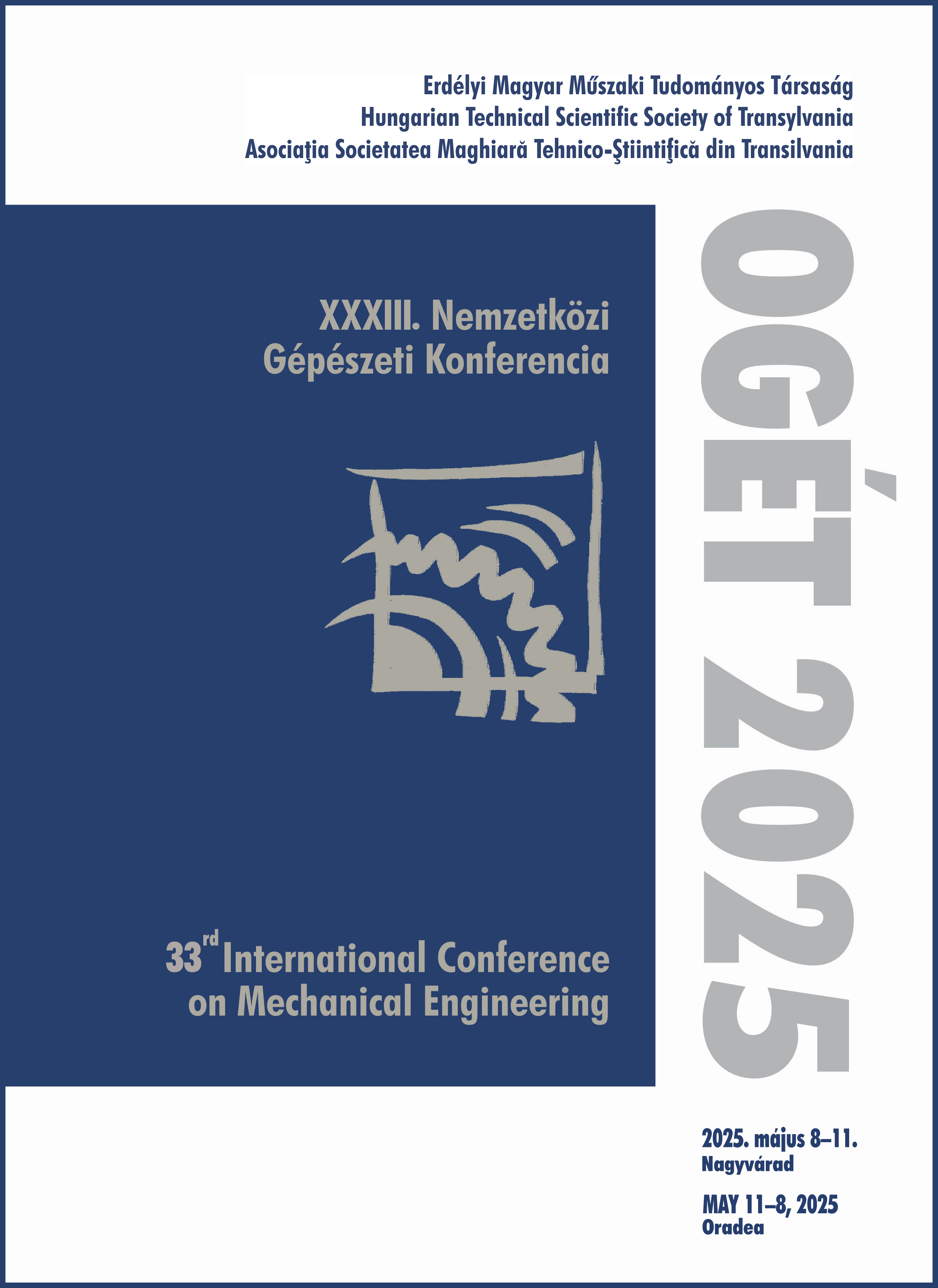Súrlódási tényező meghatározása végeselem-környezetben deformációvizsgálat segítségével vékonylemez zömítése esetén
Determination of the friction coefficient in a finite element environment through deformation analysis in thin sheet compression test
Keywords:
Thin sheet, Friction, Compression test, /, Vékonylemez, Súrlódás, NyomóvizsgálatAbstract
Thin sheets play a key role in various industries, making the precise knowledge of their material properties essential for efficient design. Several methods exist for their examination, such as tensile test, hydraulic bulge test, and compression test. The latter being less common but holding great potential. The friction occurring during testing and its pressure dependency are particularly important, as they significantly affect the forming process and the final product quality. In our study, we investigate the relationship between the Coulomb friction coefficient and the surface pressure observed during compression tests using laboratory experiments and finite element simulations.
Kivonat
A vékony lemezek kulcsszerepet játszanak számos iparágban, így pontos anyagi tulajdonságaik ismerete elengedhetetlen a hatékony tervezéshez. Vizsgálatukra több módszer létezik, például a szakító-, hidraulikus mélyítő- és nyomóvizsgálat, utóbbi kevésbé elterjedt, de nagy potenciállal bír. Különösen fontos a vizsgálat során fellépő súrlódás és annak nyomásfüggősége, mivel jelentősen befolyásolja az alakítás folyamatát és a termék minőségét. Cikkünkben laboratóriumi kísérletekkel és végeselemes szimulációkkal vizsgáljuk a Coulomb-féle súrlódási együttható és a nyomóvizsgálatok során jelentkező felületi nyomás kapcsolatát.
References
S. Coppieters, H. Traphöner, F. Stiebert, T. Balan, T. Kuwabara, és A. E. Tekkaya, „Large strain flow curve identification for sheet metal”, J Mater Process Technol, köt. 308, o. 117725, okt. 2022, doi: 10.1016/J.JMATPROTEC.2022.117725.
M. Merklein és A. Kuppert, „A method for the layer compression test considering the anisotropic material behavior”, International Journal of Material Forming, köt. 2, sz. SUPPL. 1, o. 483–486, dec. 2009, doi: 10.1007/S12289-009-0592-8/METRICS.
Y. G. An és H. Vegter, „Analytical and experimental study of frictional behavior in through-thickness compression test”, J Mater Process Technol, köt. 160, sz. 2, o. 148–155, márc. 2005, doi: 10.1016/J.JMATPROTEC.2004.05.026.
S. Coppieters, M. Jackel, C. Kraus, T. Kuwabara, és F. Barlat, „Influence of a Hydrostatic Pressure Shift on the Flow Stress in Sheet Metal”, Procedia Manuf, köt. 47, o. 1245–1249, jan. 2020, doi: 10.1016/J.PROMFG.2020.04.196.
M. Kraus, M. Lenzen, és M. Merklein, „Contact pressure-dependent friction characterization by using a single sheet metal compression test”, Wear, köt. 476, o. 203679, júl. 2021, doi: 10.1016/j.wear.2021.203679.
I. Gil, J. Mendiguren, L. Galdos, E. Mugarra, és E. Saenz de Argandoña, „Influence of the pressure dependent coefficient of friction on deep drawing springback predictions”, Tribol Int, köt. 103, o. 266–273, nov. 2016, doi: 10.1016/J.TRIBOINT.2016.07.004.
de C. L. Alexandre és L. Zsolt, „Influence of enhanced Coulomb’s model on the draw-in of the hood inner panel”, Multidiszciplináris Tudományok, köt. 12, sz. 4, o. 169–177, nov. 2022, doi: 10.35925/J.MULTI.2022.4.18.
M. Graf, S. Fritsch, és B. Awiszus, „Determination of forming behaviour of EN AW-6060 by different testing methods under cold bulk forming conditions”, Procedia Manuf, köt. 47, o. 1512–1519, 2020, doi: 10.1016/J.PROMFG.2020.04.339.


